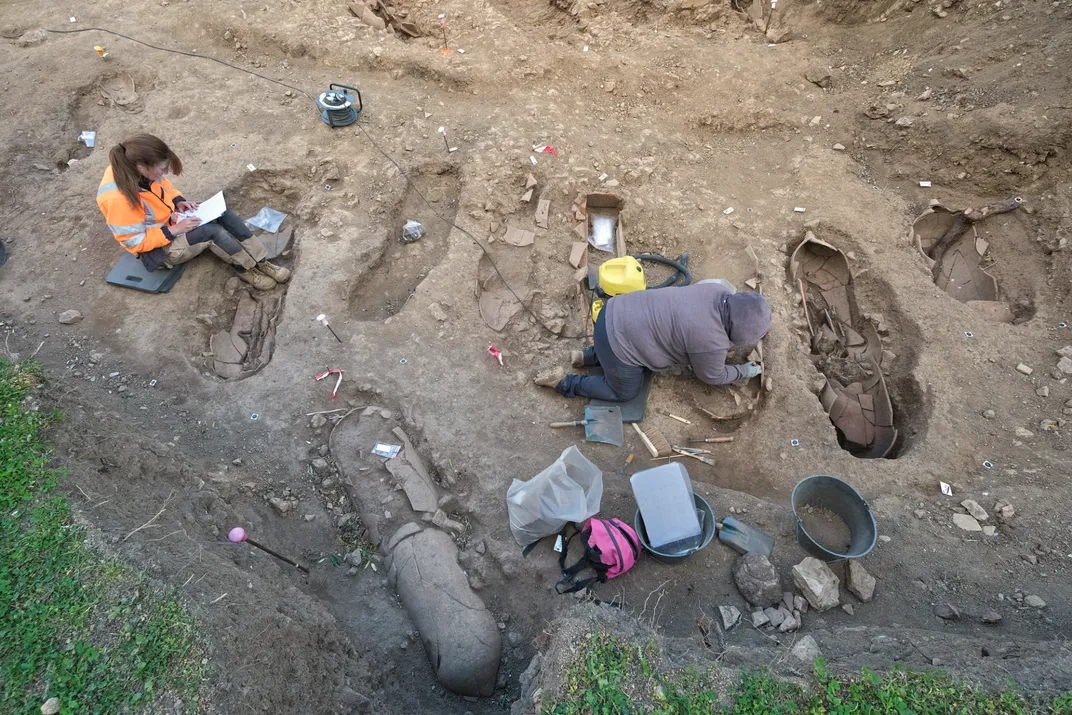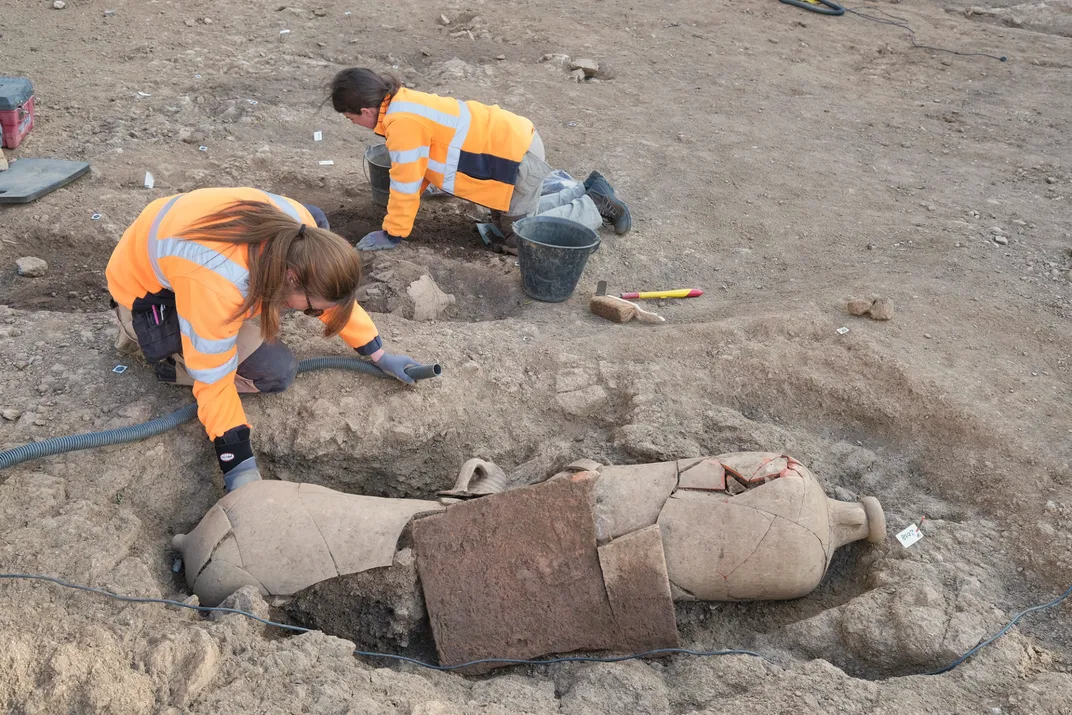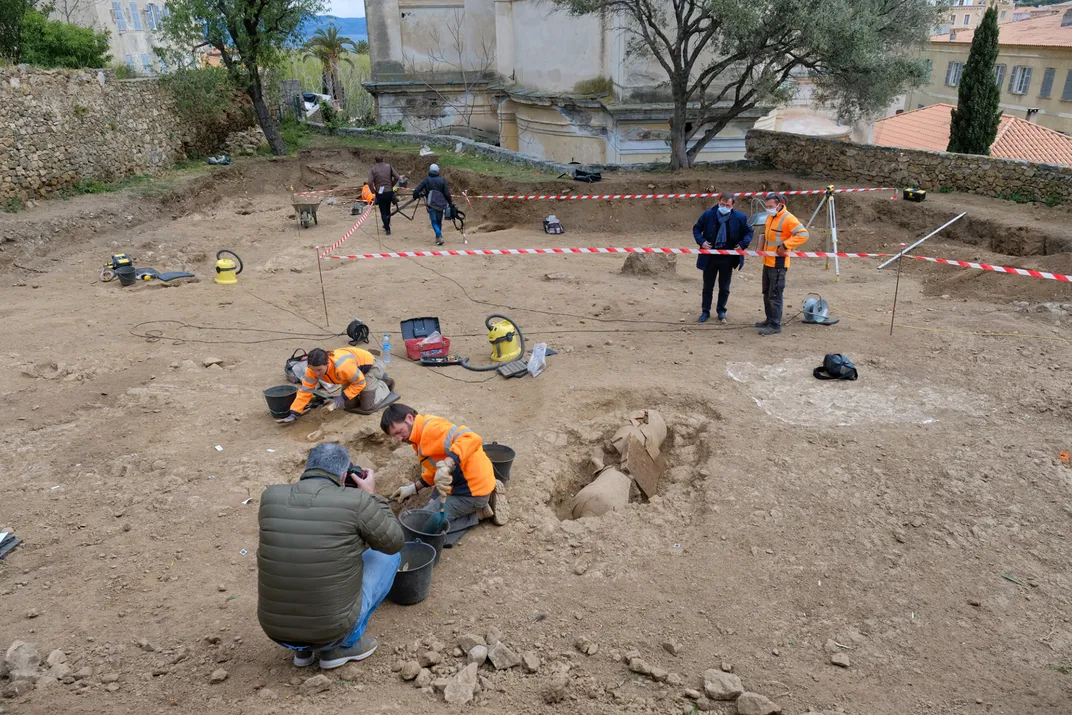Why Were These Ancient Adults Crammed into Jars and Buried on the Island of Corsica?
Archaeologists say the skeletons are in a “medium state of preservation.”

In the spring of 2019, researchers from France’s National Institute for Preventive Archaeological Research (INRAP) found evidence of ancient tombs on the Mediterranean island of Corsica. Now, after resuming excavations at the site, archaeologists have discovered a necropolis containing around 40 burials dating from between the 3rd and 6th centuries AD.
As Amanda Morrow reports for Radio France Internationale (RFI), in late February researchers began excavating a pair of 6,458-square-foot sites in the center of Île Rousse, a village on the island’s west coast. They discovered pottery fragments and bones, many of which were buried in imported amphorae, or jars used primarily to transport wine and olive oil.
The new findings shed light on the history of the region before the founding of Île Rousse in the mid-18th century. Until now, “archaeological evidence of a previous occupation [in the area] was scarce and fragmentary,” INRAP said in a statement, as translated by RFI.

The ancient inhabitants of Île Rousse buried their dead in a variety of ways: some of the graves were dug directly into the rock, while others were fitted with terracotta materials such as flat Roman tiles known as tegulae and rounded roof tiles called imbrices. Most of the remains were placed in amphorae scattered across the two sites. According to the statement, one individual was buried in a set of nested amphorae.
The practice of burying babies in jars dates back to the Bronze Age and continued into the 20th century, Yoav Arbel, an archaeologist with the Israel Antiquities Authority who was not involved in the recent dig, told Live Science’s Laura Geggel last December. (Arbel was part of a team that discovered one such 3,800-year-old burial in the Israeli city of Jaffa.)
An archaeologist cleans and examines one of the burial vessels.

The ancient inhabitants of Corsica probably imported amphorae from Africa.
Aerial view of the archaeological site
Although evidence of such funerary rituals regularly appears in the archaeological record, researchers are unsure of their purpose. As INRAP notes, amphorae burials were typically reserved for infants and children, but the Île Rousse necropolis contains several adults who were buried in large cylindrical vessels.
Ancient craftsmen likely made amphorae in Africa. Between the 4th and 7th centuries A.D., Corsicans imported amphorae containing wine, olive oil and brine from Carthage, a city in what is now Tunisia, the statement said.
INRAP researchers are still determining the age of the skeletons, which they say are in a “medium state of preservation,” according to RFI. No grave goods or funerary objects were found buried with the deceased.

The area where archaeologists discovered the remains has been occupied for thousands of years. According to the official website of the commune of Île Rousse, Phoenician settlers named the coastal town Agilla around 1000 BC; when Rome conquered Corsica in the 3rd century BC, Agilla was renamed Rubico Rosega.
Following the fall of the Roman Empire in 410 AD, the town was largely abandoned. According to History Blog, it served as a refuge for smugglers and fishermen in the centuries before Île Rousse was founded.
Archaeologists are not sure exactly which group buried the ancient remains, but as RFI reports, ongoing research on the island may offer new insights into its former inhabitants.
Get the latest stories delivered to your inbox every weekday.
Filed under: Ancient Civilizations, Archaeology, Bones, Cemetery, Interesting Finds, Death, France, Funerals, Mysteries, New Research, Roman Empire






